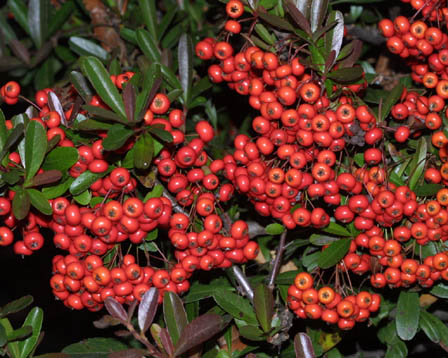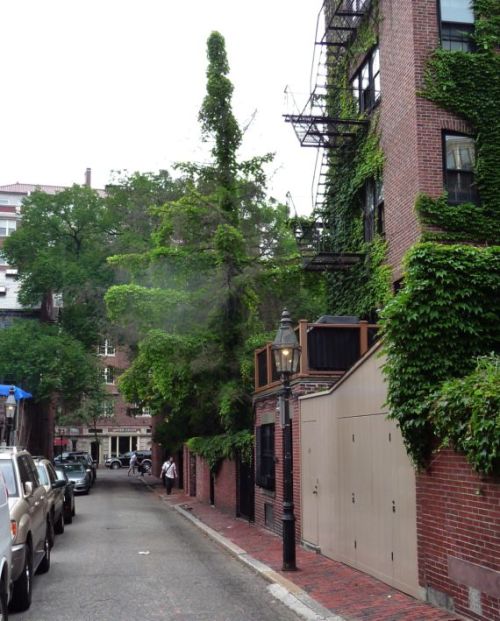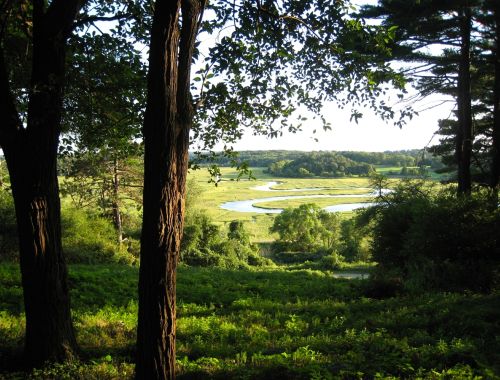The Hamamelis planting in the last post raises the issue of mass plantings, which have long been a favorite of many landscape architects.
I remember a mass rose planting, no longer extant, in a very public location in downtown Boston. One time I went out to do a little guerilla pruning in it with an administrator from the Boston Redevelopment Authority. (Hmm. Perhaps it doesn’t really count as guerrilla pruning if the person you’re working with has the influence to make sure the cuttings are taken away by staff, much as she wanted it to seem as if she was doing the pruning sub rosa, so to speak.)

Rose thorns. Ow ow ow.
While were able to clean up the specimen roses in the planting, the mass-planted rugosa roses were another question — it was impossible for us to navigate through the thorns to remove the several years’ worth of dead wood that had accumulated. It was quite clear why they so drastically needed maintenance, and equally clear why they’d had so little. I believe that this planting has been torn out.
At Naumkeag in Stockbridge, MA, a similar deal. Fletcher Steele designed a beautiful mass Pyracantha planting on a bank below the drive, but neither I, an intern at the time, nor anyone on The Trustees of Reservations permanent staff had the asbestos legs, hands, or arms that would have made a good pruning job possible. (The common name for Pyracantha is Firethorn.)

Pyracantha has a stunning berry display, as well as some of the wickedest thorns you'll ever come across, mostly hidden under the berries and leaves (one is visible in the upper right hand corner of this photo).
The best we could do was to snip down the most obvious vertical and horizontal shoots to keep the whole thing in bounds, and just let the plants fend for themselves. I’m not sure that planting is still there, either, though in the name of historic authenticity, it may be.
However and wherever a mass planting is used, it makes sense to understand not just the look of the plant species used, but also its habit, its limitations (thorns, for instance, or a tendency toward brittleness or over-enthusiastic suckering), and the opportunities you may be closing off in using it — not least of which might be the willingness of maintenance staff to take care of it, if it’s a difficult species.
Masses can help shape space, which is what we aim to do. At the same time (perhaps I’ve said this before), it’s not a bad idea for landscape architects to get out there themselves and work with as many plants as possible in person — to do some planting, do some pruning, do some moving — to understand how these vital design elements really work in the landscape, and what it takes to keep a design looking the way you want it to look.
Read Full Post »




















